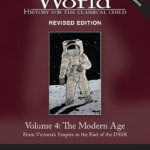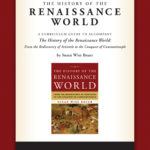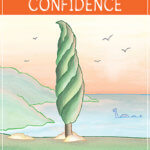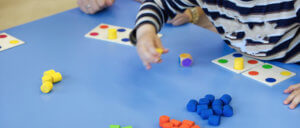
Introduction
Catherine Levison’s Interpretation
Karen Andreola’s Interpretation
Introduction
Are Charlotte Mason methods incompatible with classical education? Certainly not; Miss Mason was a classical educator herself, and although some of her recommendations differ from our recommendations, you should always remember that everyone who does classical education (including Charlotte Mason, the Bluedorns, Doug Wilson, Christine Miller, and ourselves) is adapting an old model to a modern context. In effect, we’re all “neoclassical” educators, modifying, improving (we hope) and changing the ancient ways of learning so that they make sense for students today. None of these adaptations are “straight from Plato’s mouth,” which makes arguments about the “genuine classical” method somewhat pointless. Home schoolers and after-schoolers have the wonderful opportunity to choose those methods that best suit their children and their own learning styles and schedules.
Having said that: Some Charlotte Mason methods are thoroughly in agreement with the philosophy of The Well-Trained Mind, while others aren’t in line with what we suggest. I’m offering these outlines of agreements and disagreements, along with my own rationale for our methods, as a way of helping you sort through your options.
If you’re interested in Charlotte Mason, you should consider going straight to the source – her own volumes on education. However, these aren’t always easy to find, and most parents use Charlotte Mason methods via one of her popular interpreters; Catherine Levison and Karen Andreola. Obviously Mason’s original writings have been reworded and re-interpreted by these authors, but I’ll leave it to others to point out how they may or may not differ from the source. My concern in this newsletter is to point out areas of agreement and disagreement between the methods suggested in The Well-Trained Mind and the prescriptions you’ll find in Charlotte Mason Education, More Charlotte Mason Education, and A Charlotte Mason Companion.
Catherine Levison’s Interpretation
Catherine Levison, Charlotte Mason Education, new edition, and More Charlotte Mason Education (both Beverley Hills, CA: Champion Press, Ltd., 2000).
Catherine Levison’s two volumes on Charlotte Mason education offer brief summaries of Mason’s philosophy and methods; Levison’s chapters are clear and open-ended, making few specific prescriptions but offering the reader an opportunity to construct a “build-your-own” Charlotte Mason education. The first volume, Charlotte Mason Education¸ covers the basics of Charlotte Mason methodology and offers thoughts on each subject area.
The Method in Brief. In her first chapter, Levinson summarizes the Mason method as relying on narration, rather than workbooks; on whole and living books, rather than textbooks; and as utilizing short morning lessons with the afternoon and evening free. I wholeheartedly endorse the first two methods! I also agree that short morning lessons are important for young children, although I do think that junior high and high school students should be improving their powers of concentration by spending longer than 15-20 minutes per subject (Levison does say that the 15-20 minute lessons are for the “younger grades”); I think college-bound students should expect to spend some of their afternoon time in lessons as well, although the exact time spent will vary from family to family. (As a side note, I should repeat AGAIN that the schedules in The Well-Trained Mind are an abstract picture of how you might manage your school day if you wanted to do EVERYTHING in the book. No one wants to do everything in our book, and practically no one follows the schedules, which the publisher insisted on inserting.) Later, Levison makes a point of telling us that “free afternoons” doesn’t mean “no structured activity”; her chapter on “Free-Time Handicrafts” notes that “too much leisure time” can allow children to develop bad habits, and that children “need absorbing, interesting work” so that their minds can be “continually and wholesomely occupied.” Levison offers excellent resources for these activities.
Narration. Levison’s basic description of narration is clear and similar to ours. She suggests that you begin orally with six year olds and not require that students write down their own narrations until the age of ten. While some students may not be ready to write until this age, I think it is important to introduce writing earlier; many seven and most eight year olds are capable of writing down the first sentence of their narration, while you complete the rest of it, and a nine-year-old can write down at least half of her narration. If your son weeps when you make him write, he’s obviously not mechanically ready to use those muscles for a long period of time. But having him write a small amount (even three to four words, if he’s not ready for a whole sentence) every day, rather than having him do all his work orally as Levison seems to suggest, is the best way to strengthen and develop those muscles.
Literature. Levison writes that a predominant theme in Mason education is, “Don’t get between the child and the book, don’t talk too much, and don’t lecture.” There’s a delicate balance to be found here. The Well-Trained Mind suggests that very young children (1-4) need plenty of guidance, and that the parent should not be afraid to teach explicitly what the child needs to know; at the same time, you should not kill the child’s love for books by making them narrate or discuss every single book that they read. Levison’s writings also require balance. Her suggestions often seem to veer close to an attitude of, “Children are wise and can learn on their own.” Yet the book lists she offers – Lamb’s Tales from Shakespeare for six to nine year olds, Dickens for eleven-year-olds – certainly require the parent to explain and clarify. So while I might differ slightly from Levison on the attitude the parent should have towards the child’s learning, it seems possible that the practical outworking of both methods will look very similar: Read to the child, explain where necessary, and discuss those things that seem important, but don’t try to make every text an opportunity for a lecture, or you’ll lose the child’s attention.
Composition and grammar. My biggest disagreement with Levison’s recommendations have to do with methods of teaching writing. Levison writes, “Charlotte Mason…assures us [children] will be able to write if they have had good books. There is a strong warning in Home Education not to hamper children with instruction.” She goes on to suggest that children aged six to nine do only oral narrations; ten and eleven year olds do written narrations and “learn punctuation and capitalization by seeing so much well-written literature. Composition comes naturally to children who have spent time with books.” Nine to twelve year olds write essays on history and literature, junior high students “write on subjects they are really interested in,” and only high school students do formal essays. “Even then,” Levison concludes, “we are not to ‘teach’ much.” She suggests instead that they take notes on history, literature, and art, write letters to the newspaper, and write research papers.
In my experience, this method just doesn’t work for many students; I’ve seen reams of wretched writing from children who have read plenty of good literature. Literature needs to be read and appreciated, but grammar and composition skills are quite different from literature; these skills need to be explicitly taught, or students will not know how to construct essays or how to use complex language to support their arguments. I also find that students who don’t do plenty of short, skill-building assignments early on are completely lost when they arrive in junior high and are told to “write on subjects they are really interested in.” They need careful instruction in the skill of building written arguments.
I’m not suggesting that young children be forced to write reams every day. Rather, I’m recommending that even young children study grammar (Mason’s 15-20 minutes per day is a good guideline here), learn the rules of proper usage, and do short (one to two sentence) writing assignments in order to apply those rules. Middle grade students need a formal writing curriculum so that they can learn how to put paragraphs and compositions together. Without this preparation, they are likely to flounder in high school – and it is much more difficult to learn writing skills for the first time in ninth grade than to learn them gradually in the eight grades preceding.
Writing continues to be a weak area in the larger home school community; we need more, not less, explicit teaching in this area.
Levison’s chapter on grammar recommends that you delay instruction until the child is ten, and then use Simply Grammar for a few minutes per day. Rather, I suggest that you begin grammar while the child is young and find memorization of rules and principles easy. Language learning peaks at around ten, and the ability of children to absorb language begins to decline slowly after that point. So use this “window of opportunity” to make the knowledge and use of proper grammar and mechanics second nature. Your child will find language use much, much easier later if you do this basic work now. Also, while I find Simply Grammar clear and easy to understand, I find that many students who use it do NOT internalize its principles; there’s simply not enough practice in it. I would suggest the use of A Beka, Rod & Staff, or Voyages in English instead. (Two pages per day is plenty.) (NB 2022: Add to the recommendations Grammar for the Well-Trained Mind. It is a complete, intermediate-to-advanced grammar curriculum from Well-Trained Mind Press, developed after this article was written.)
Science. Charlotte Mason’s science leans heavily on nature walks. These are wonderful and can form the center of a life-science program (Levison provides a great resource list!). But we should recognize that physics, chemistry and astronomy (not to mention computer science) are equally important; Levison’s chapter on science makes no mention of these area.
Math. Levison’s primary math recommendation is that curricula be adapted to short lessons; she doesn’t discuss the necessity of memorizing math facts (something we suggest), although she does write that concrete facts should be taught before abstract concepts, and that young children should be allowed to use counters. None of this is in any way counter to classical methods. (I particularly like the recommendation, quoted from the 1893 Parents’ Review, that “no child should be use a multiplication table until he has made one” using concrete objects; this seems to be a good way to illustrate the concept for a child who’s still thinking in grammar-stage ways when he begins multiplication.)
History. “Charlotte’s students were taught history in chronological order,” Levison writes – and I couldn’t agree more! History the Charlotte Mason way is very similar to the Well-Trained Mind history recommendations; Levison suggests the use of a history book as a “spine,” the use of other history and literature books, including biographies, as supplemental, the keeping of a time line, and the use of a history notebook (the “book of the centuries”). These methods are all compatible with our suggestions in The Well-Trained Mind (Levison makes no specific recommendations as to how many centuries to cover per year, as we do). We do suggest that students study the geography of the country they are learning about in history, while Mason’s geography work is a separate course, centered around the use of travel guides to study modern countries (certainly a viable alternative).
Levison’s second volume, More Charlotte Mason Education, expands on the topics in her first book, giving more concrete instructions for such things as keeping a book of the centuries, doing narration, etc. Many of these instructions are completely compatible with the methods we describe in The Well-Trained Mind. Her overview of the Charlotte Mason method is longer and more detailed; I agree with a great deal of it (choosing quality reading material, reading adult level books to children, making narration rather than testing the central method of evaluating learning). My problems with the method only have to do with the degree to which it might be interpreted as “unschooling”; for example, Levison writes that it isn’t necessary to tie subjects together, because “we have total confidence that the child will make the connections unassisted.” Some children undoubtedly will, but classical education’s emphasis on the difference between grammar-stage and logic-stage learning recognizes that making connections between subjects (and events) is a critical skill that should be taught; parents often have to lead the way in showing their budding critical thinkers HOW to make those important logical connections (which is why we recommend use of a time line, Critical Thinking Press resources, logic texts, etc.).
I certainly can’t disagree with the Charlotte Mason quote at the end of this section: “The end result of a Charlotte Mason education,” Levison writes, “is the children ‘find knowledge so delightful that it becomes a pursuit and source of happiness for a lifetime.’” (See our article “The Joy of Classical Education” for more on this topic.)
Short lessons. Levison suggests lessons under twenty minutes in length for children under eight, gradually increasing to thirty minutes per subject in junior high and forty-five minutes in high school. While I do think that short lessons are good for elementary students, you should aim for longer periods of concentration in the upper grades; it takes time to focus in on one subject, evaluate it, and form an opinion. 45 minutes for junior high and 60-90 minutes for high school (preparation for those Tuesday-Thursday classes in college!) allow for a deeper appreciation of the material. The shorter lessons allow for the student to cover from 15-21 different subjects per week, even in elementary school; the sample “Charlotte Mason” schedules in the back of More Charlotte Mason Education have third graders doing Old Testament, New Testament, Writing, Printing, Drawing, Reading, French, Picture Talk, Natural History, Handicrafts, Math, Music, Dancing, and Geography each week. This seems rather frantic to me. I would encourage parents of young children to concentrate instead on the core skills of reading, writing, grammar, and mathematics, drawing in history and science once the child is reading fairly well. Other subjects should be done as you have time – but don’t neglect those core skills.
Levison writes that Mason’s method is not unschooling, and I agree; she also writes that it is “far more relaxed than relying on…classical education.” I’m not sure I agree with that; classical education does prescribe more direct instruction than Levison does, but our schedules in The Well-Trained Mind (the ones no one follows) are not any more demanding than the schedules in More Charlotte Mason Education. I suspect that people who actually DO both kinds of education don’t stick the schedules in either book; my observation of classical educators is that they alternate periods of direct, rigorous instruction with lots of outside play and running around. At our house, we are generally done with school by 1 PM – just as Levison suggests – yet we certainly follow classical methods. (Click here for a description of classical home education at our house. It doesn’t sound much like a day at Logos School, I can assure you.)
History. This chapter is very similar to the chapter in Charlotte Mason Education, but Levison suggests the use of a History Chart to supplement the time line; I think this is an excellent idea, and particularly good for visual learners.
Grammar and writing. My previous remarks apply to this book as well. Levison writes, in “Curriculum Choosing,” that “Folks who excel at grammar pursue editing jobs later in life (thank goodness for them) and they are able to help the average person who didn’t just step out of a college-level English class.” Our goal in The Well-Trained Mind is to free students from reliance on editors; I think that everyone can excel at grammar, and thus at written communication. Levison also suggests here, “If your children will go directly into college then I would give them a more strenuous grammar program right before they go….I have the seventh grade Rod & Staff book and I consider it to be at the collegiate level.” In the first place, even students who don’t go to college will need to be able to communicate fluently in writing if they’re going to find a place in the current economy; everyone needs grammar, because everyone needs to be able to write grammatically. In the second place, this “strenuous” work needs to be done EARLY, while the child’s mind is receptive; if you do this all along, it isn’t nearly as strenuous as saving it until the year before college (when it’s unlikely to stick in any case). In the third place, Rod & Staff is a good curriculum, but the seventh-grade book is simply not adequate for college preparation. Use a high school curriculum instead.
Mathematics. Levison’s primary recommendation is that you adapt your math curriculum to make the lessons shorter — something we certainly wouldn’t quarrel with for young children.
Contrast with classical education. In her chapter on “High School,” Levison contrasts classical education with Charlotte Mason methods:
So in the grammar stage of classical education the goal is to instill facts, many facts, that will be built upon during the later stages. If you skip that step those facts will not be there to serve the child in junior and senior high. Therefore, it’s important to be aware of the methodology of classical education so that you don’t find yourself with an unforeseen problem. This brings us to what I see as the two primary differences between the methods. Charlotte Mason made herself clear about her convictions that children are not receptacles into which we pour facts….Charlotte strongly urges teachers to lean toward knowledge and ideas rather than compiling as many facts as possible.”
While it’s true that the grammar stage of classical education does focus on the accumulation of information, Charlotte Mason herself suggests the use of repetition and memory work as part of learning. The primary difference between the two is twofold: the degree to which you choose to make memory work and repetition (both of which Mason recommends) central to learning in grades 1-4, and the extent of direct instruction in language skills in those early grades. I don’t think that you’ll cripple a child for high school learning if you choose to do less memory work than we suggest in grades 1-4; certainly a junior high student can study England or the American Revolution without having memorized the Magna Charta or the Declaration of Independence in fourth grade. Nor does classical education forbid discussing ideas! We only suggest that children in the elementary grades not be forced to do critical thinking before they are mentally prepared to do so. I don’t see any reason why the compilation of facts and the use of “ideas” need to be contrasted, as though they are mutually exclusive.
But if a child is missing foundational skills in writing and grammar, you may indeed find yourself with an “unforeseen problem.” So I would strongly suggest that you do direct instruction in language arts early, so that you don’t find yourself with a ninth-grader who is too intimidated to tackle a research paper.
Karen Andreaola’s Interpretation
A Charlotte Mason Companion: Personal Reflections on the Gentle Art of Learning, by Karen Andreola (Charlotte Mason Research and Supply Company, 1998).
At least half of Karen Andreola’s book on Charlotte Mason methods is devoted to issues which aren’t strictly educational; discipline, preventing bickering, hand-crafts, making lace, mother culture, etc. These chapters certainly aren’t pro- or con- classical education. And in the chapters that treat education directly, I find much that is similar to classical methods. A Charlotte Mason education, Andreola writes, doesn’t “boil down to one particular set of books, set of pictures, set of music tapes, etc.” Rather, it is a philosophy that guides the selection of books, pictures, and tapes – just like classical education. Use of living books, narration, no homework, education as a discipline; none of this is in any way counter to classical methods. Andreola writes that Charlotte Mason education balances free time (within which the child can explore independently) with “regular times of structured learning when a child follows assignments or interacts with the teacher directly.” I too see this as an ideal. Andreola notes that although children can be trusted to develop interests on their own, they may “run out of [ideas] unless they are given a regular supply” – which is exactly what I’ve said about classical learning in “The Joy of Classical Education.” And she describes education as a matter of “establishing relations” between subjects, something which is also a goal of classical education and its interwoven study of history, literature and science.
So I was a little startled to find this remark about classical education in Andreola’s introductory chapters. “A true intellectual life,” Andreola writes, “is not achieved by exercising children’s minds as if they were nothing but memory machines. This is where Charlotte’s method is in disagreement with Dorothy Sayers’ strong emphasis on memory work in the early grades. Unlike Dorothy Sayers, Charlotte spent all her grown life with children, observing them and teaching them, always refining and reforming education for the children’s sake.”
I wonder whether the “clash” that many people seem to find between Charlotte Mason methods and classical education has to do with a misunderstanding of what classical education is. Yes, classical educators do concentrate on the absorption of facts in grades 1-4. But we never suggest treating children as “memory machines.” Memory work is one part of classical education for the grammar stage; absorption is also achieved through reading, narration, experimentation, projects, drawing, and many other methods which Andreola describes with approval. And Andreola herself writes in a later chapter, “Certainly we should drill children on the simple facts they need to memorize – arithmetic facts, important dates in history, Bible verses, scientific terminology. Short daily drills will not dampen the children’s school day.” Classical education would merely expand this to include important speeches and poetry (also recommended by Mason herself), and define “short” as 15-20 minutes daily. Why is this so incompatible with Charlotte Mason methods? In any case, classical educators don’t try to establish a “true intellectual life” using memorization alone; the “intellectual life” is developed over twelve years of education that includes work in logic and rhetoric as well.
Andreola’s chapters offer much that I can agree with, and a few things that I would state differently.
Teaching methods. Andreola quotes Mason herself: “Let [children] get at the books themselves, and do not let them be flooded with [diluted talk] from the lips of their teacher. The teacher’s business is to indicate, stimulate, direct….The less the parents and teachers ‘talk-in’ and expound their rations of knowledge and thought to the children they are education, the better for the children…” Elsewhere, Mason is very clear that children must be directed and taught, so I would not want to see this interpreted as a directive to stop instruction your children! But classical education does recommend a little more guidance and direct teaching in the early grades than does Charlotte Mason education. Don’t stifle your child’s interests and questions. But don’t be afraid to offer answers either, especially in the years before the critical faculty is fully developed. Remember that young children ARE curious – AND receptive. So use these years as times to explore, AND to give the child information that he will store away for later use. This doesn’t have to be an either/or proposition (“Either let the child explore, OR fill his mind with facts.”) You can, in fact, do both at once.
Use of textbooks. Andreola notes that textbooks can be used as an outline to “tack” living books and experiences onto – especially for science. This is an excellent way to approach the use of science textbooks.
Teaching literature. I agree completely with Andreola’s recommendation to avoid literature textbooks, which contain snippets of longer works, in favor of the longer works themselves. Andreola also writes, “I’ve always been very careful not to ‘over-work’ literature by picking it apart or by scheduling in very many suggested activities listed in those expensive study guides.” I can whole-heartedly endorse this approach for the grammar stage, when you should simply be reading and summarizing with your child. But during the logic stage, “picking it apart” is a valuable part of literature study. Don’t “over-work” this by picking EVERY book the student reads to pieces, but do realize that the maturing intellect is ready to ask questions about the books it is encountering, rather than simply summarizing their content. (The chapters on Charles Dickens and Shakespeare give good concrete tips to studying these authors.)
Language development. “Talking to little ones throughout the day helps them to think,” Andreola writes. She couldn’t be more correct. Talking to your children is an essential (and underrated) part of classical education; Andreola’s chapter on talking up, rather than down to children, is an excellent outline of the process by which you develop a child’s vocabulary and reasoning skills through conversation.
Narration. Andreola’s descriptions of the narration process and her suggestions on how to use it in history and literature are very similar to our recommendations in The Well-Trained Mind. In addition, she gives excellent how-to tips; for example, she suggests that you jot down important names, dates and places before asking a child to narrate a lengthy or difficult historical reading, so that the child can use these as “hooks” to hang the narration on and can avoid unnecessary errors. She also gives a list of “narration requests” – phrases you can use to draw the child into narration (such as “Tell me all you know about…” or “Tell me five things you learned about…”)
Writing. I have reservations about the Charlotte Mason method of teaching composition. (See “Composition and grammar” in my review of Catherine Levison’s books for more on this subject.) Andreola writes that composition should be an integral part of history, literature, and science, rather than a separate subject. This is certainly your goal, but in my experience most students need a separate course in developing the skills of expository writing so that they can express their ideas about history, literature and science with clarity.
Andreola suggests that writing can be done simply by having the child narrate until the age of ten, and then transitioning into writing these narrations down. Oral narration has thus been preparing the child for written work. While this is true, writing skills differ from speaking skills, and a child who narrates fluently will not necessarily write well. Spoken language is natural; children pick it up simply from hearing it. But written language is an artificial construct with special conventions of its own – and those conventions are not merely punctuation and capitalization! Written language is put together differently from spoken language, and needs to be taught as a skill in its own right. And I couldn’t disagree more with Andreola’s statement that “Good grammar…have been picked up from the child’s use of narrating from living books.” While this is probably true for some children, many more need explicit instruction in grammar so that they can write correctly. (Andreola also notes that she corrects her children’s speech as a way of developing good grammar. That’s a great practice, but many mothers will need some grammatical remediation of their own before they’re able to do this; unless you can explain what a dangling participle is off the top of your head, you’re probably better off with a grammar text.)
Furthermore, the type of writing developed through practice in oral narration is only one type of writing – summary writing, something which belongs primarily in the grammar stage. As students move into the logic stage, they need practice in developing a written argument. A good writing curriculum is invaluable in this process; students need careful guidance in learning how to structure expository essays, and this can’t be gained simply from narration.
Spelling. Andreola describes a method of spelling that uses lists of constantly misspelled words and refers to rules only when they are needed to explain the spelling of these “trouble words.” This is certainly a valid way of customizing spelling to an individual child’s need, but there is also great value in a “workbook” type spelling program that also covers dictionary skills, syllabification, alphabetizing, and the other skills that we may sometimes forget to teach.
Art and music. Andreola’s chapters on picture study and music appreciation are excellent guides to an area which is (admittedly) undervalued in classical education.
History. “Charlotte Mason strongly believed in focusing on the story part of history while children are developing their powers of imagination,” Andreola writes – which is exactly what we suggest in The Well-Trained Mind. Mason also suggested the use of biographies and historical fiction, as we do.
Recommended Products
-
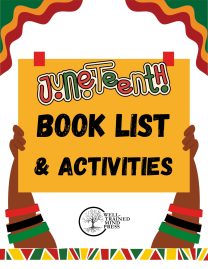
Juneteenth Booklist & Activities
0 out of 5$0.00 Add to cart -
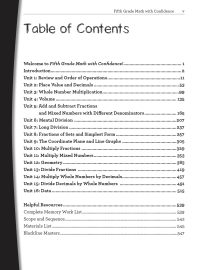
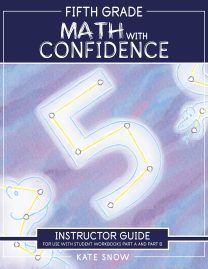
Fifth Grade Math with Confidence Instructor Guide
0 out of 5Starting at:$36.95Original price was: $36.95.$27.71Current price is: $27.71. Select options -
Sale!

Hansel & Gretel and Other Stories: Downloadable MP3
0 out of 5$12.95Original price was: $12.95.$9.71Current price is: $9.71. Add to cart -
Sale!
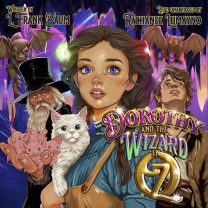
Dorothy and the Wizard in Oz: Downloadable MP3
0 out of 5$25.95Original price was: $25.95.$19.46Current price is: $19.46. Add to cart -
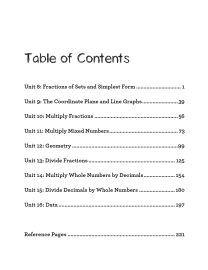 Sale!
Sale!
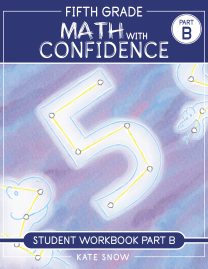
Fifth Grade Math with Confidence Student Workbook B
0 out of 5$16.46 – $21.56 Select options This product has multiple variants. The options may be chosen on the product page -
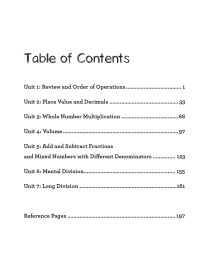 Sale!
Sale!
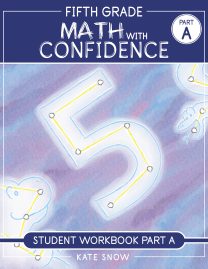
Fifth Grade Math with Confidence Student Workbook A
0 out of 5$16.46 – $21.56 Select options This product has multiple variants. The options may be chosen on the product page
ABOUT THE AUTHOR
Susan Wise Bauer
Join over 100,000 homeschooling families
For the latest offers, educational insights, products and more.
By joining you agree to our privacy policy.



